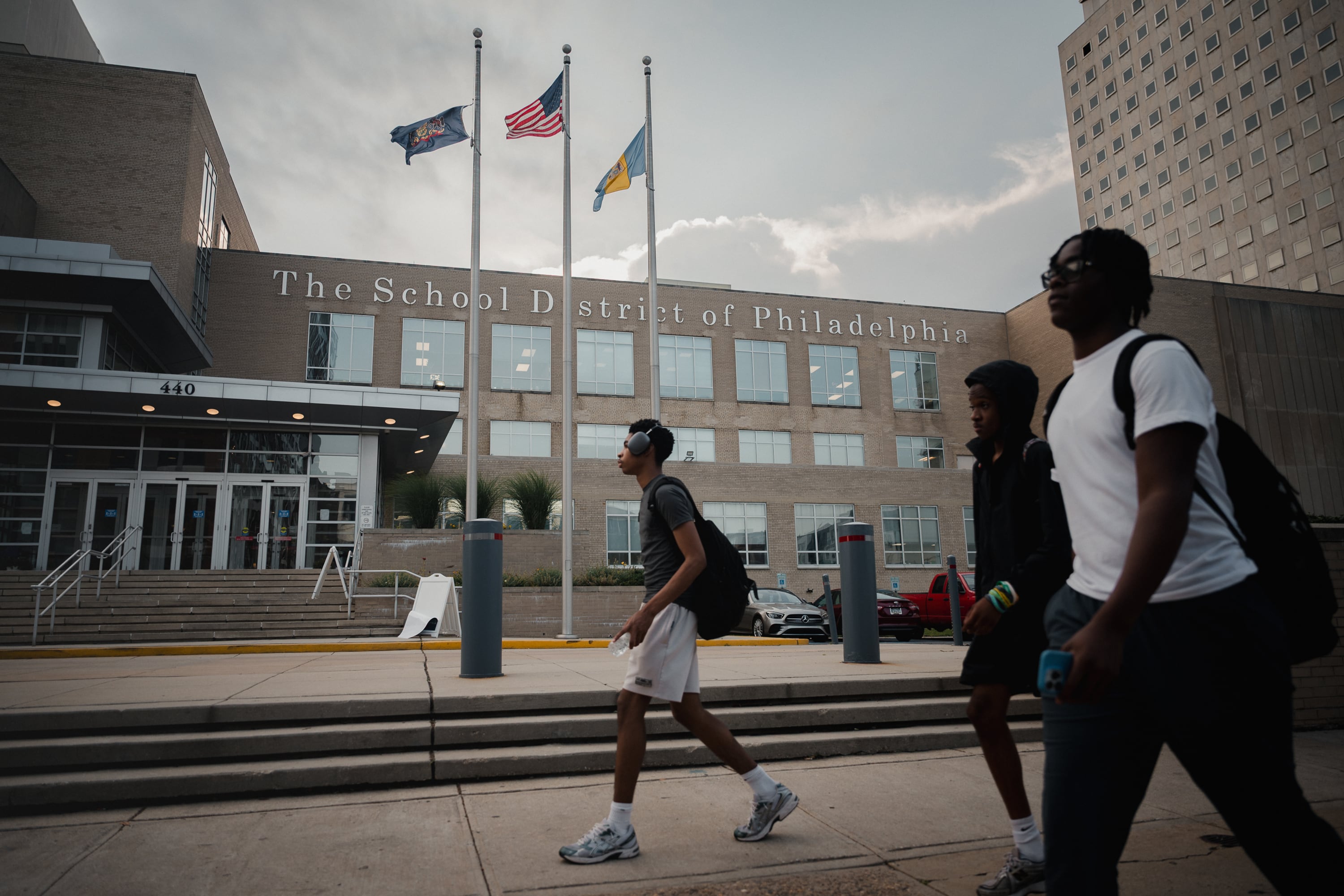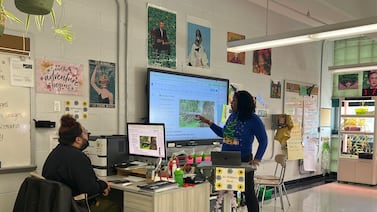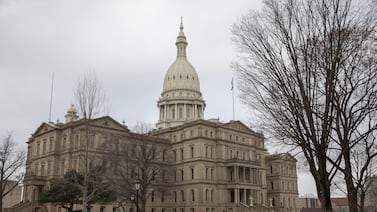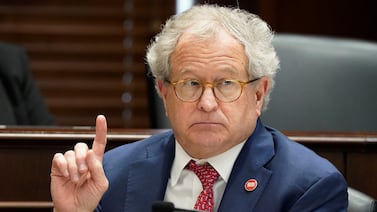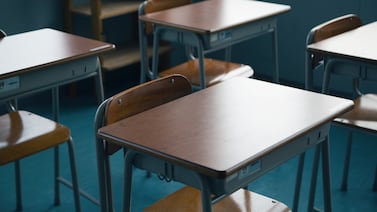Sign up for Chalkbeat Philadelphia’s free newsletter to keep up with the city’s public school system.
The Philadelphia school district intends to reduce the number of standalone middle schools as part of its plan to cut the number of empty seats and support student achievement, Superintendent Tony Watlington recently revealed.
The district currently operates 14 standalone middle schools, enrolling students from fifth or sixth grade through eighth grade. Watlington said his aim is to reduce the number of grade bands so that students move from one school to another less frequently, and to use district resources more efficiently.
“I want to be clear that does not mean that the traditional middle school is good or bad,” said Watlington at last month’s Board of Education meeting. “We want to limit the number of transitions that our students have to make from one school to the next, as a strategy to continue to keep our enrollment and to build the enrollment and to meet our young peoples’ needs.”
Watlington’s comments about standalone middle schools were part of an update about the district’s facilities planning process, which officials have indicated will lead to school closures — as well as new co-locations and building modernizations — as a way to “rightsize” the district. They’ve also stressed that there is no list yet of which schools may be closed, and that they will continue to engage families and community members in the process before they make any decisions.
The district plans to consider multiple factors, including which neighborhoods have previously experienced school closures, in its recommendations about which schools to close.
There’s a longstanding debate over whether sending students to separate middle schools helps or harms them.
Watlington said that studies of district data show that students in Philadelphia do better with fewer school transitions. One study from 2001 found that Philadelphia students who stayed at their elementary schools for middle grades generally performed better. Some national research has found similar results.
But other studies that compared outcomes of students who attended standalone middle schools with those at K-8 schools found that there was not a significant difference.
Watlington said reducing the number of grade bands also aligns with the facilities planning process’ emphasis on ensuring students get better access to school programs, like AP classes and arts programming.
“Our school district needs to increase access to high quality academic and extracurricular programming across all neighborhoods,” said Watlington. “Because right now, there are huge disparities based on where you live.”
Many school board members expressed support for reducing the number of middle schools, noting that they hoped it would result in better academic opportunities for students.
“I am really happy to see the reduction on the grade bands,” said board member Wanda Novalés. “I think we’re going to see a great benefit from that in our schools.”
Majority of Philadelphia’s standalone middle schools are underenrolled
District officials have said one goal of its facilities planning process is to ensure that there are enough seats for students in crowded schools and fewer empty seats in schools where enrollment has shrunk over the past decade.
The district’s middle schools show how lopsided the city’s enrollment has become in terms of geography, with enrollment numbers peaking in the Northeast while falling elsewhere.
The majority of the district’s standalone middle schools enrolled less than half the number of students their buildings had capacity for last school year, according to a Chalkbeat analysis of district data.
Tilden Middle School, for example, had just over 260 students in a building meant for 1,200. At the Academy for the Middle Years at Northwest, which enrolled 150 students last year, nearly a quarter of its seats were empty.
But the two middle schools that were overcapacity last year were both in Northeast neighborhoods, with Baldi Middle School enrolling 200 more students than it had space for.
Board President Reginald Streater urged families and community members to attend upcoming engagement events to voice their feedback.
“There is no secret plan hidden in a drawer somewhere,” said Streater. “This is really, truly intended to be a process that’s co-created with the public.”
The district plans to hold 16 engagement sessions in July, in-person and virtually, about its facilities planning process. See the list of those events here.
Rebecca Redelmeier is a reporter at Chalkbeat Philadelphia. She writes about public schools, early childhood education, and issues that impact students, families, and educators across Philadelphia. Contact Rebecca at rredelmeier@chalkbeat.org.

